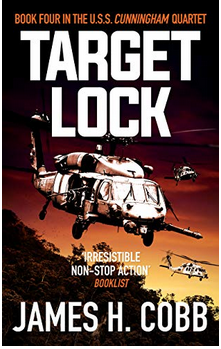Another book from the 'backlog pile'...
Dale Brown,
Fatal Terrain, 1997
United States
USS Honolulu (SSN-718)
Los Angeles Class Submarine
Real ship, details as in service.
USS Pasadena (SSN-752)
Los Angeles Class Submarine
Real ship, details as in service.
USS Miami (SSN-755)
Los Angeles Class Submarine
Real ship, details as in service.
USS Springfield (SSN-761)
Los Angeles Class Submarine
Real ship, details as in service.
Plus other real members of the US fleet.
China (Peoples Republic)
Mao Zedong (ex-
Ayatollah Ruhollah Khomeini, ex-
Varyag)
Ex-Soviet Kuznetsov (Pr.1143.5) Class Aircraft Carrier
Real ship, details as built
Ex-Iranian aircraft carrier, sold to China following the events of '
Shadows of Steel' (1996) and refurbished by the Chinese.
Fuqing
Type 905 Class Replenishment Tanker (Fifth member of class)
Details as per the real ships
Hudong
'Repair and Support Ship', class not specified
No other details provided.
Kang
Luda (Type 051) Class Destroyer
Details as per the real ships
Note: In the earlier novel '
Sky Masters' (1994), these ships were referred to as 'Type EF4' Destroyers and had been modified to enhance their Anti-Air Warfare capabilities, this ship appears to have been modified with an aft mounted HQ-7 launcher.
Changsha (161)
Luda (Type 051) Class Destroyer
Real ship, details as in service.
Note: In the earlier novel '
Sky Masters' (1994), these ships were referred to as 'Type EF4' Destroyers and had been modified to enhance their Anti-Air Warfare capabilities.
Xia
Nuclear Submarine (Attack), class not specified
No other details provided
Republic of China (Taiwan)
Kin Men
Kuang Hua III Class Frigate (Fictional)
Armament: 1 x 40mm gun (Fwd), 2 x 20mm Phalanx (Fwd & Aft), 36 Round VLS (12 Harpoon, 10 ASROC, 14 Standard AAM), 4 x Torpedo Tube (21 inch?), .5 Mgs, Sea Sparrow.
Has a helipad and hangar space capable of holding 2 x S-70C(M)-1/2 Thunderhawk Helicopters, normally carries one.
Stealth Design
Note: The real Kuang Hua III program produced the Ching Chiang Fast Attack Craft (
Specifications)
Iran
Taregh
Kilo Class Submarine
Details as per the real ships.
Non-Ship
Kevlar Fishing Nets - Designed/manufactured by China, sold to Iran, & North Korea. Can be deployed from fishing craft and large enough to catch a Los Angeles Class Submarine.
Note: Catching nuclear submarines in this manner is quite dangerous and can result in the loss of the fishing vessel and it's crew. Despite what the author thought it can be performed with ordinary steel fishing nets, no special equipment is required. See following list for details of real life cases: (
Link - British Sea Fishing: Submarine and Trawler Collision Incidents.).
Plot summary: The year is 1997 (The novels timeframe is 18 May to 1 July.), Iran has sold their ex-Soviet aircraft carrier to China. With this new ship and ideas derived from Sun Tzu, the Chinese launch a devious campaign designed to give them Taiwan.
Notes: This novel sets up background elements for the later '
Dreamland' novels '
Pirahna', '
Strike Zone' & '
End Game'. One key event in it is severe damage being caused to the
Mao Zedong which necessitates an extensive rebuild, from which the ship emerges as the
Zhenyuan in '
Tiger's Claw'. As with the later novel this one does not mention any of the other Chinese aircraft carriers that appear in the Dreamland Series, despite the fact the books are nominally set in the same fictional universe.

